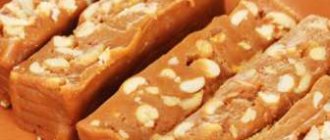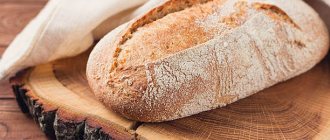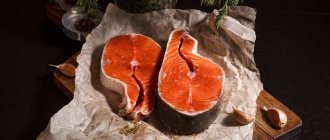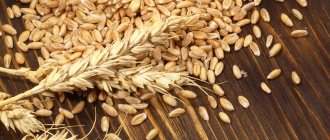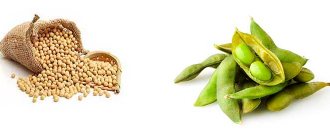Rice noodles are a type of pasta shaped like long, elongated strips made from rice flour. It is considered a national product of Asian, in particular Japanese and Chinese, cuisine. Consumers are offered a product from 2 mm to 2 cm wide, from 20 to 50 cm long. The color can be white or white-grayish, the texture is dense, and after cooking it is elastic. A pronounced nutty or bean aftertaste, but a faint hint of rice. It is often confused with funchose, noodles made from bean starch, but this is a completely different product.
Chemical composition of rice noodles
Rice noodles are pasta products made from rice flour. Due to its transparent structure, it is also called glass. In appearance, it is often confused with funchose. The difference is that the latter consists of bean starch.
This healthy product does not require boiling. Before eating, simply add hot water and leave for a few minutes. The main advantage of the product is its composition. It is gluten-free, fiber-free and salt-free. Due to this, the noodles are easily digestible and do not provoke an allergic reaction. The chemical composition of the product is represented by the following components:
We recommend reading: Gluten: what it is and why it is harmful, where it is found, symptoms of intolerance
- vitamins of groups E, PP and B;
- iron;
- copper;
- calcium;
- alimentary fiber;
- selenium;
- sodium;
- phosphorus;
- potassium;
- saturated fatty acids.
Rice noodles contain 7% protein
The mineral content ensures the strengthening of the musculoskeletal system. Vitamin B present in the composition has a positive effect on the condition of the skin. Iron helps prevent anemia. Saturated fatty acids provide the body with energy and promote the absorption of other components.
Attention! Rice noodles are white in color due to their starch content.
General characteristics of the product
Important: There has been confusion in the modern market with rice and glass noodles. These are 2 different dishes with a specific set of ingredients and cooking method. But among the varieties of rice vermicelli there is translucent lifen. It is what they used to call glass, despite belonging to the category of rice products.
Content:
- General characteristics of the product
- Chemical composition of ready and dry funchose
- Benefits and possible harm of the product
Rice noodles have several common names. Among them: starch, Chinese, glass and funchose. The word “funchoza” does not mean vermicelli itself, but the dish that is prepared from it. But locals and lovers of Asian cuisine often use the term specifically to refer to thin strips of rice. This is a traditional dish of the Chinese, Japanese and Korean culinary traditions. Funchoza is prepared from starchy noodles, pickled peppers, branched onions, carrots, radishes and other vegetables. The cook independently determines the set of components and can add meat, mushrooms or other fillings to taste. The dish is served like a regular soup, mostly hot.
Interesting: funchose can be prepared in stages, like any multi-component dish, or you can buy instant noodles. The manufacturer places 1 serving of rice product and a bag of dried vegetable seasonings inside the package. The quality of instant noodles is a controversial issue that depends on the cost of the product, composition and policy of the manufacturer.
Asian paste for funchose is prepared from mung bean starch. Mung beans (mung beans) are an annual herbaceous plant from the Legume family. It is believed that the birthplace of the culture is India. Small green seeds, which look very similar to peas, have filled the whole world. Their level of consumption is not inferior to chickpeas and other legumes.
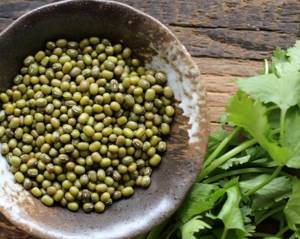
Mung bean is not the only source of starch. On an industrial scale, potato starch, cannas (an annual forage plant), cassava (an edible tropical plant) or yams (a legume similar to a giant potato) are often used. To reduce the cost of production, bean starch is also replaced with corn starch.
Traditional rice vermicelli has a round cross-section when cut. The diameter of each strip may vary due to production characteristics. Dried noodles are added to salads, soups, deep-fried appetizers and other dishes.
Interesting: dry rice vermicelli is colored white, but after heat treatment it becomes translucent.
Rice noodles are prepared using a special technique - an extruder. Layers of dough are passed through the unit, and the output is thin strips, which must be further processed and wrapped in packaging. Less often, a sheet of dough is simply evaporated from a flour solution and cut into strips yourself. The second option is more labor-intensive and takes longer. Salt is not added to traditional vermicelli, but modern manufacturers most often add it to the composition.
Types of food component:
- Guotiao. Flat strips of rice flour that look very similar to Italian fettuccine.
- Shahefen. Wide flat strips of noodles. Similar to Italian pappardelle pasta.
- Laifen. Thick round translucent vermicelli. Prepared with sticky rice. The shape is identical to the spaghetti we are used to.
- Misian. Long, thinnest white strips, similar to spaghettini.
What are the benefits of rice noodles?
Rice noodles are considered a rich source of many substances needed by the body. It contains 8 amino acids that take part in the most important life processes. It perfectly satisfies hunger, combining well with many foods.
Its beneficial properties include:
- fast saturation;
- normalization of nutrient balance;
- regulation of the gastrointestinal tract;
- replenishment of energy reserves;
- prevention of anemia;
- easy digestibility.
Experts recommend including rice noodles in the diet of people suffering from diseases of the cardiovascular system. It is especially useful for children and the elderly. Since the product does not contain fiber, it does not cause flatulence or stomach pain. After using it, there is no heaviness.
Due to the sodium and potassium content, rice flour vermicelli normalizes the water-salt balance, which helps get rid of edema. Due to the presence of magnesium in the composition, the product has a positive effect on the functioning of the cardiovascular system. The rich content of vitamin B ensures stabilization of the emotional state. Since noodles are complex carbohydrates, consuming them reduces the need for fats and glucose. This has a positive effect on your figure.
Calorie content, composition, benefits, harm and recipes for preparing funchose
2.1 For weight loss
Funchoza is an ideal product for people who want to lose weight, as it contains complex carbohydrates. By including funchose in your diet, you can minimize your intake of fats and sugars and feel full of energy. In addition, it contains amino acids necessary for cell regeneration in the body.
When dieting, the body experiences a lack of the usual amount of food. The person becomes irritable. If the menu is incorrectly selected, side effects occur due to a lack of vitamins and microelements. If you use funchose in diets, the negative impact of diets on the body is reduced, and it is easier to tolerate stress:
- the nervous system stabilizes;
- the skin continues to remain elastic;
- constant cell rejuvenation occurs;
- blood glucose levels are normalized;
- bones become stronger;
- blood vessels gain elasticity;
- the functioning of the urinary system improves.
If the noodles are made from high-quality bean starch, without corn and rice additives, and no lead bleaches were used in production, they have virtually no contraindications. But in order to use funchose in weight loss diets, you need to learn how to prepare it correctly.
Being a natural plant product, it is often used in lenten and vegetarian cuisine. Funchoza in diets is usually used as a side dish. It is replaced by potatoes, as it is less caloric. If you eat no more than 200 g of noodles per day, then you will not gain excess weight from it. The main task is to control what to eat with her. When on a diet, you should give preference to stewed or pickled vegetables instead of meat, chicken and sweets. If you add various oriental spices, you can create a very tasty dish.
Nutritionists say that if you follow the rules, you can quite successfully lose weight with funchose even on the Dukan diet. The main principle of this diet: eat as much as you want - you will lose weight! The only condition is that you can’t eat everything, but certain foods at each stage. Since the first two stages of the diet involve a complete abstinence from carbohydrates, funchose can only be eaten at the third and fourth stages.
The first part of the diet lasts no more than 10 days, called “Attack”, only protein foods are consumed, so glass noodles should never be eaten - they contain almost 0% protein. The second stage is “Alternation” - during it, protein days are alternated with protein-vegetable days. Since crystal vermicelli does not contain protein and is not a vegetable, its consumption during this period is also excluded. The third stage “Consolidation” - 2 meals a week, you are allowed to eat anything. You can also use funchose, there will be no harm. But you should remember that you should not eat more than 120 g of it per meal, since noodles are still a high-calorie product. For taste, you can add soy sauce or fish to it. The fourth period “Stabilization” is the last stage. All foods are allowed, including carbohydrates. The exception is protein Thursdays, on which carbohydrates, and as a result, funchose, are prohibited.
Thus, in its finished form, funchose is successfully used as a product for weight loss; the main thing is to clearly understand when it can be eaten.
Harm of rice noodles
The benefits and harms of rice noodles are especially important to know when dieting. The product has many more positive properties. But there is an opinion that if consumed in excess, rice noodles can provoke the development of kidney and bladder cancer. This is due to the content of toxic substances in the product. The disadvantages include the bland taste of Asian vermicelli. To enrich it, fatty sauces and various flavor enhancers are often used in seasonings. They increase the calorie content of the dish and have a negative impact on health. To minimize the harm from a dish, it is enough to choose a safe dressing.
How many calories are in rice noodles
The calorie content of rice noodles in finished form is 108 kcal per 100 g of product. A serving of a finished dish averages 200-250 g. Its calorie content does not exceed 300 kcal, which is considered below average for a side dish. The contents of the BZHU are as follows:
- proteins – 1.8 g;
- fats – 0.2 g;
- carbohydrates – 24 g.
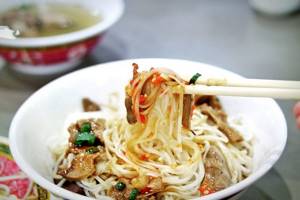
Rice vermicelli dishes are recommended to be eaten with chopsticks
Funchoza for weight loss:
Funchoza is rich in B vitamins, and they are responsible for the efficiency of metabolic processes in the body, which is important for weight loss. To this we must add the absence of gluten. This is an extremely complex protein that causes inflammation and a lot of troubles that slow down the process of food digestion, what kind of weight loss is there?
Problems with this product may still occur in a person who has altered cellular sensitivity to insulin. For such people, even a moderate portion of noodles can cause a significant increase in appetite. This leads to the fact that people often suffer from overeating, as soon as they introduce at least one serving of this dish into their diet.
So, of course, it is better to eat noodles occasionally or completely eliminate them. Everyone else can prepare low-calorie dishes from funchose with the addition of shrimp, squid, mussels, chicken breasts and other sources of low-fat protein.
Contraindications for rice noodles
Asian noodles made from rice flour are an easily digestible and nutritious product. But in some cases, its use should be abandoned. One of the main reasons is an allergic reaction. It occurs very rarely because the noodles do not contain gluten. Patients with diabetes need to be careful when introducing the product into their diet. Its glycemic index is 61, which is average.
It is equally important to pay attention to the quality of the product. When making counterfeits, bleaches containing lead and aluminum salts are used. They are necessary to give the product a suitable shade. These substances have a devastating effect on health. Therefore, rice noodles should only be purchased from trusted places.
Rules for eating rice noodles
Before preparing noodles, you need to study the recommendations indicated on the package. The product must be filled with hot water for 5-6 minutes. The process of liquid absorption is accompanied by an increase in mass. To avoid fibers sticking together, add 1-2 tbsp to the container. l. vegetable oil. In some cases, it is recommended to pre-soak the product in cold water. Initially, the noodles may be white. When ready, it becomes completely transparent.
Suitable dressing, vegetables or meat are added to the finished vermicelli. Most often it is seasoned with soy sauce or table vinegar. Seasonings are added as desired. At the end, the dish is sprinkled with chopped herbs or sesame seeds.
It is advisable to buy pasta that requires additional heat treatment. A finished dish containing them may include a lot of unnecessary additives. The nutritional value and benefits of the product are reduced as a result.
Comment! Tapioca is used to achieve the desired structure when making rice noodles.
Recipe? Recipe!
Is it possible to prepare any dish with this product at home? Of course you can! Here, at least, according to this recipe:
Recipe:
Products:
- Rice noodles – 200 gr.
- Cabbage (cauliflower) – 150 gr.
- Cabbage (broccoli) – 150 gr.
- Carrots - 2 pieces
- Chicken broth - 3 tablespoons
- Table vinegar - 1 tablespoon
- Sesame oil - 1 tablespoon
- Parsley - 2 sprigs
- Spices and salt - to taste
Rice noodles are poured with boiling water, allowed to stand (15 minutes), then placed on a sieve.
Parsley is washed. Cauliflower and broccoli are also washed, then separated into inflorescences, blanched for 1 minute in boiling water with vinegar added there (1 tablespoon of vinegar per 1 liter of water).
The carrots are peeled, washed, cut into slices, and sautéed in sesame oil. Then put cabbage and seasoning there, pour in the broth, add salt and simmer everything under the lid (for 3-5 minutes). Add noodles to all this and mix. The finished dish is placed on plates. Top with parsley leaves.
Applications of rice noodles
Rice noodles are one of the main ingredients in traditional Asian dishes. It can be used as a side dish or added to multi-component salads. It goes well with meat, fish, mushrooms and vegetables. The Japanese cook it together with radish, cucumber, carrots and seafood. In ancient times, samurai believed that rice noodles could increase life expectancy. The beneficial properties of the product were directly proportional to its length.
We recommend reading: Benefits of bell pepper, properties
Garlic, soy sauce, vinegar, red pepper, coriander and ginger powder are often used as seasonings.
We recommend reading: Chili peppers: benefits and harms, properties, how to eat them
In departments with Asian products you can buy a ready-made set of seasonings. Asian vermicelli is considered an excellent dietary product. It does not promote weight gain, while stabilizing metabolism. Due to its low calorie content, it can be eaten at any time of the day. The main advantage of the product is the quick satisfaction of hunger without the feeling of heaviness. In addition, it promotes the proper absorption of nutrients.



